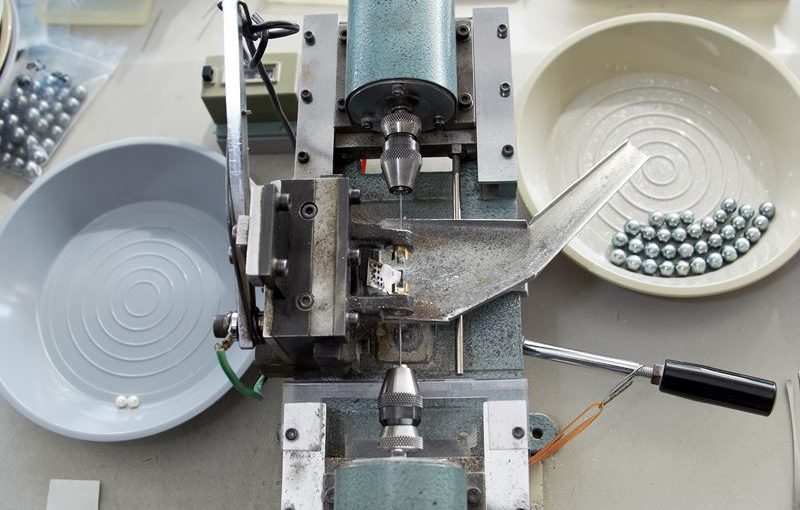7 Lessons From The Road, by Samuel Jones Pearls
Feb 5 2018

Considering our 102 year history, and with over 150 combined years of working with pearls under our roof today, you would have thought that had heard it all. Surprisingly, we are sometimes forced to scratch our collective heads and consult each other when we’re posed with a question to which we don’t know the immediate answer.
These humbling moments lead us to conclude that pearls do indeed take a lifetime to master, and while we do know an awful lot about pearls, even our most experienced staff are still learning – every day is a school day at Samuel Jones Pearls, and we love it.
That all being said, we have learnt along the way and thought we’d massage our egos by sharing some truths that we do know about pearls. Below are 7 facts including some commonly held misconceptions, speculations and bizarre myths:
- Your pearl jewellery can be cleaned. There, we said it. While this won’t be a shocking revelation to many, given the amount of dirt, grease and beauty products which becomes attached to the pearls we match, restring, remount or repair, some people are apparently still in the dark. Your pearls were born in water, they lived in water for a long time, sometimes decades. They will not mind the occasional gentle clean to remove the dirt which can adorn them. We are mixed in emotion when we receive mucky pearls. On one hand it’s lovely that they’re being worn, on the other it’s sad to think that their beauty is masked and that a simple wash can make a world of difference.
- Pearls are best and most safely cleaned in mildly soapy water. Mix a small amount of soap (a quick spin of a hand bar is a good amount) in a basin of lukewarm water and give your pearls a bath. We use ultra-soft toothbrushes for stubborn dirt, but often gentle agitation or an overnight soak will have the desired effect. Over the years we have experimented with many cleaning gadgets, including ultrasonic cleaners, tumblers, and steam cleaners. While these all have their individual advantages, more often than not, a warm soapy soak and scrub will be all pearls need.
- Your cultured pearls were not formed from a grain of sand. Cultured pearls which account for 99.9% of what we deal with at Samuel Jones Pearls, were not formed from a grain of sand. Instead, a spherical nucleus was inserted into either a freshwater mussel or saltwater oyster, by hand. This kick-starts the natural calcification process during which many hundreds of layers of nacre are concentrically deposited on the nucleus, giving rise to a (hopefully still spherical) pearl, which is made of calcium carbonate.
- Pearls can, and do last many lifetimes. Pearls have adorned humans for thousands of years, and many ancient pieces are still in existence. With good care, and in the absence of harsh chemicals or abrasives, your pearls should look as beautiful in 100 years as they do now. This is not to say pearls aren’t delicate objects; they lack the robustness of diamond and other gemstone jewellery, but provided their fine nature is respected they will continue to keep their magical qualities.
- We knot your rows for security, longevity and according to fashion. When we restring a row of pearls, it is most likely that we will knot the entire row. However, for a plain restring only the first three or four pearls either end are knotted. This gives the most vulnerable part of the row, near the clasp, additional strength and security. On a knotted row, the knots serve two purposes; reducing the risk of losing pearls in case of a break, and secondly stopping the pearl’s abrasive surfaces from touching one another. It is more likely that we shall knot the entire row so the pearls benefit from both of these factors.
- Your necklace may seem to ‘shrink’ after a restring. In a similar vein to the above, once we have carefully restrung your pearls, you can expect them to be shorter, sometimes significantly, however they are simply returning to their original length. The silk onto which pearls are strung will stretch and elongate over time meaning the necklace will sag and lose its shape. An inexpensive restring is a fantastic way to rejuvenate your pearls, particularly if they’re cleaned at the same time. We always count pearls into and out of Wisdom Hall to make sure we’ve got it right.
- The ‘Gritty Teeth Test’ is real, and works. It’s a rare day when we have to employ it, but with the very high realism of some simulated pearls, we sometimes pass pearls over the front teeth to feel for their natural gritty texture. This last-resort invariably works, and despite our expertise, is sometimes the only way to know for sure.